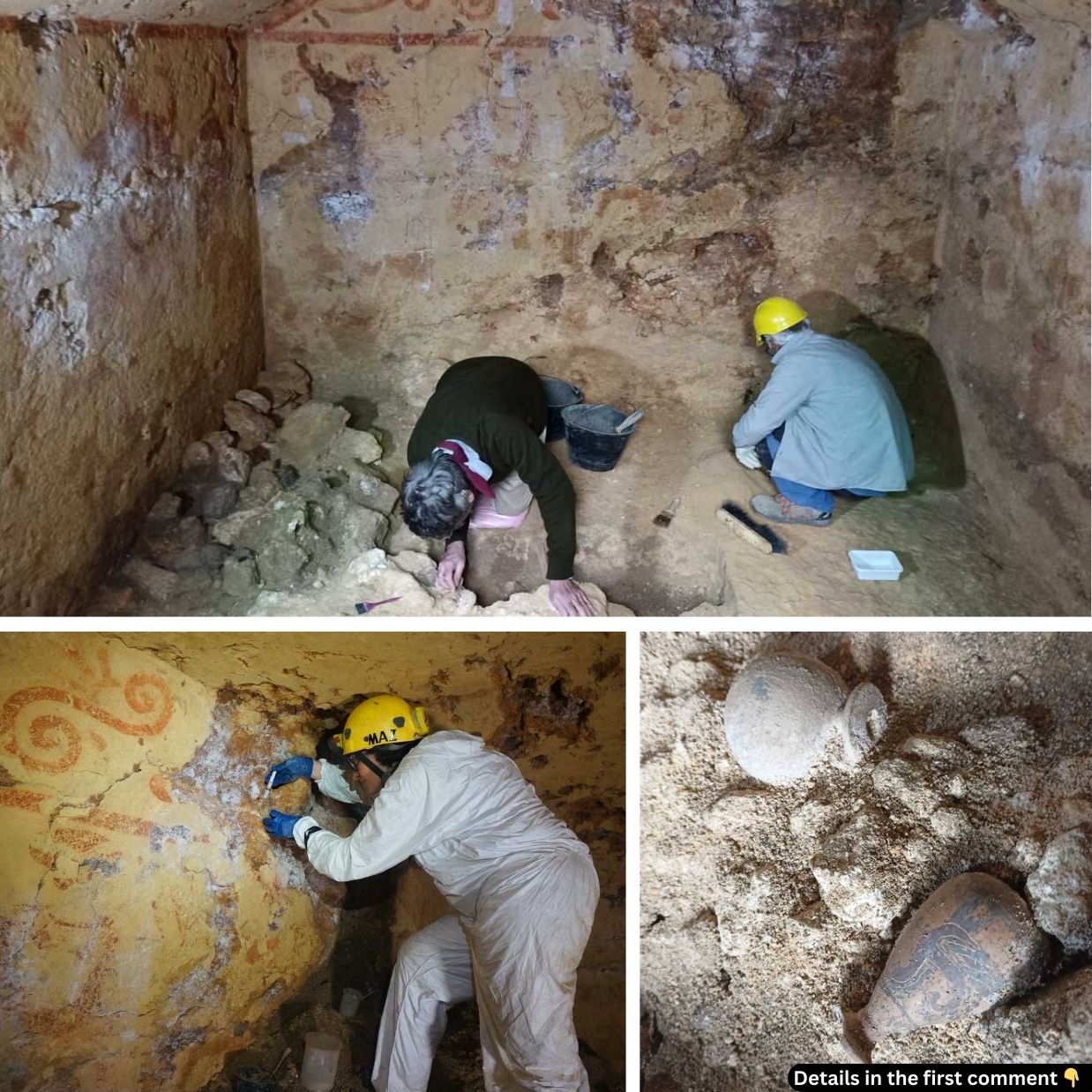In the heart of Italy’s ancient Monterozzi Necropolis, an extraordinary discovery has recently emerged: a 5th-century BCE Etruscan tomb adorned with vibrant frescoes. This painted burial chamber, unearthed in Tarquinia, offers a rare glimpse into the art, culture, and ceremonial life of the Etruscan civilization. Featuring scenes of dance, music, and craftsmanship, the frescoes present a lively portrait of a society that valued both the sacred and the celebratory. What makes this tomb even more significant is its meticulous preservation, allowing us to peer into a bygone era of intricate rituals and vibrant cultural expressions.
Unveiling the Tomb: A Surprising Discovery in Monterozzi Necropolis
The tomb, designated as Tomb 6438, was discovered during an excavation conducted by archaeologists from the Superintendence of Archaeology, Fine Arts, and Landscape of Southern Etruria. The site, part of the vast Monterozzi Necropolis near Tarquinia, was initially identified in late 2022, but its significance only became apparent after further study and analysis. The tomb had been looted in antiquity, and subsequent damage from collapsing tombs left it partially obscured. However, a careful inspection by archaeologists led to the uncovering of the chamber, which contained vibrant frescoes that had remained remarkably intact despite centuries of disturbance.
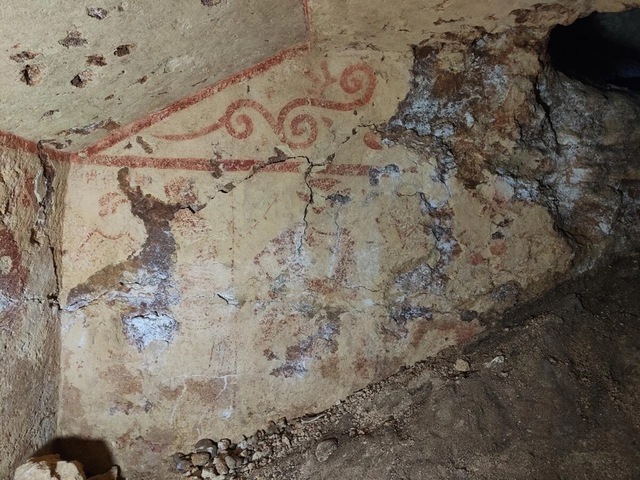
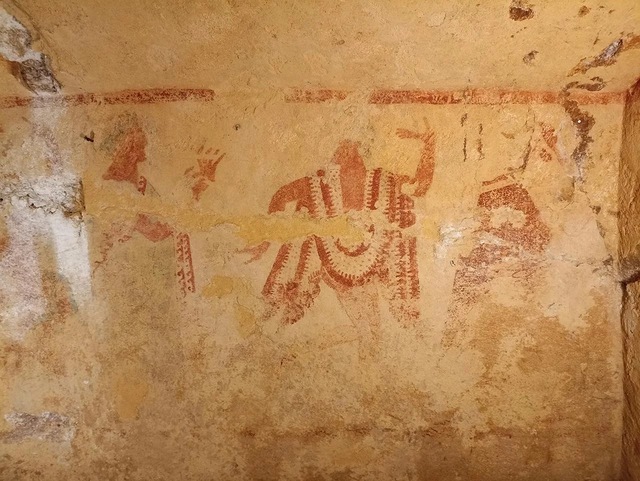
The discovery was not only surprising in terms of its location but also in the sheer scale of the frescoes. This painted tomb is the first of its kind to be found in Tarquinia in over a century, making it a crucial find in the study of Etruscan burial practices and artistic traditions. The tomb’s relatively undisturbed nature, despite previous looting, allowed for a more comprehensive understanding of its contents and the cultural context in which it was created.
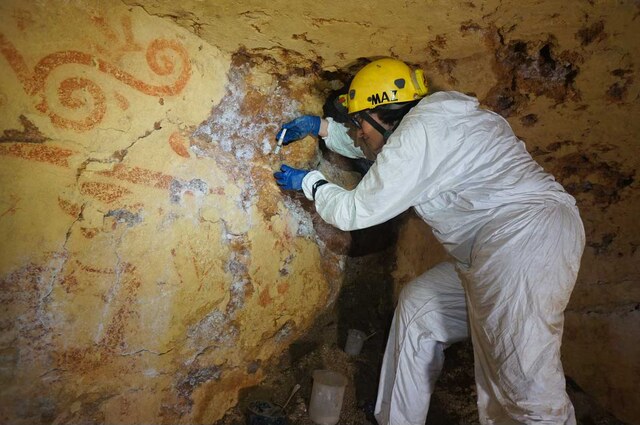
Video
Watch this video to learn about the discovery of a 2,500-year-old painted tomb at an Etruscan necropolis in Italy, featuring a unique scene of a smithy.
The Frescoes: Dance, Music, and Cultural Significance
One of the most captivating aspects of this tomb is the frescoes that adorn its walls, which vividly depict scenes of life and death in the Etruscan world. The left wall of the tomb is the best-preserved and showcases a lively scene of four figures—two men and two women—dancing in a circle around a flautist. The figures are depicted with grace and motion, their bodies in harmony with the music that fills the space. This scene reflects the Etruscan appreciation for music, dance, and festivity, which were central to their cultural and religious life. The inclusion of such a vibrant portrayal in the tomb suggests that dance and music played an important role in the rituals surrounding death and the afterlife.
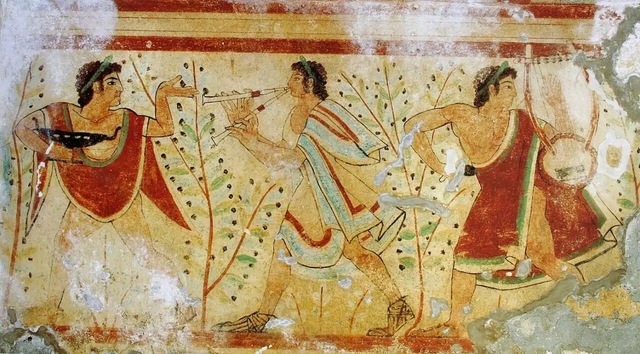
In Etruscan society, the tomb was not just a place for burial but also a space for celebrating the life of the deceased and their social position. The depiction of dancing figures highlights the cultural significance of ritual performance in Etruscan burials. This artistic expression reinforces the idea that the Etruscans believed in a joyous and celebratory afterlife, where music and dance could transcend death, creating a space for continued social interaction and spiritual renewal.
The Mysterious Metallurgical Workshop: A Glimpse into Etruscan Craftsmanship
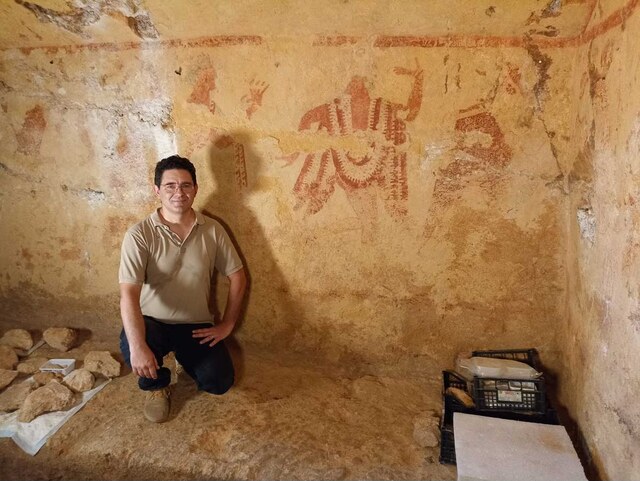
The right wall of the tomb, although obscured by mineral deposits, reveals a scene that is equally fascinating and enigmatic: a metallurgical workshop in use. This scene offers a glimpse into the Etruscans’ advanced craftsmanship, particularly in metalworking, which was central to their economic and religious life. The figures depicted in the workshop are shown engaging in the processes of metalworking, likely creating valuable artifacts for the elite class.
Some researchers have suggested that this scene may represent the mythical forge of Sethlans, the Etruscan equivalent of Hephaestus, the Greek god of fire and craftsmanship. Sethlans was considered the god of metalworking, and the workshop scene may symbolize the divine origins of craftsmanship and the importance of metalwork in Etruscan culture.
Alternatively, the workshop could depict the family trade of the deceased, highlighting the significance of artisanal production in Etruscan society. The presence of this scene in a burial context further reinforces the idea that the Etruscans viewed death as a continuation of life, with the deceased maintaining their roles in society through artistic and economic contributions.
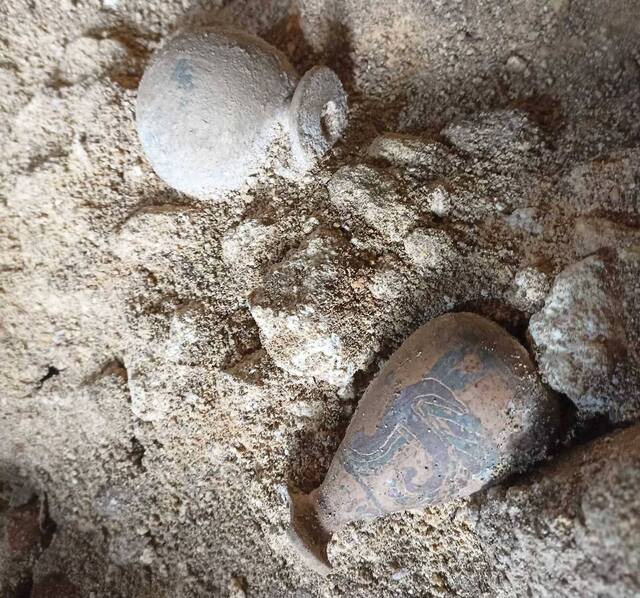
Unraveling Etruscan Society: What the Tomb Reveals About the Civilization
The frescoes and scenes in the tomb provide critical insights into the hierarchical structure of Etruscan society. The lavishness of the tomb, coupled with the symbolic and elaborate depictions, suggests that the individual interred here was a person of high status, likely a leader or someone with significant social influence. The role of women in Etruscan society, as seen in the depiction of women dancing in the frescoes, suggests a relatively high degree of social equality, particularly in the context of funerary rites.
This discovery adds to the growing body of evidence that challenges earlier assumptions about the role of women in ancient societies. The prominence of women in Etruscan tombs, particularly in high-status burial sites like this one, underscores their potential roles as leaders, artists, and religious figures. Further study of the tomb could reveal more about the intersection of gender, power, and religion in Etruscan culture, shedding light on a civilization that remains one of the most fascinating and enigmatic in ancient history.
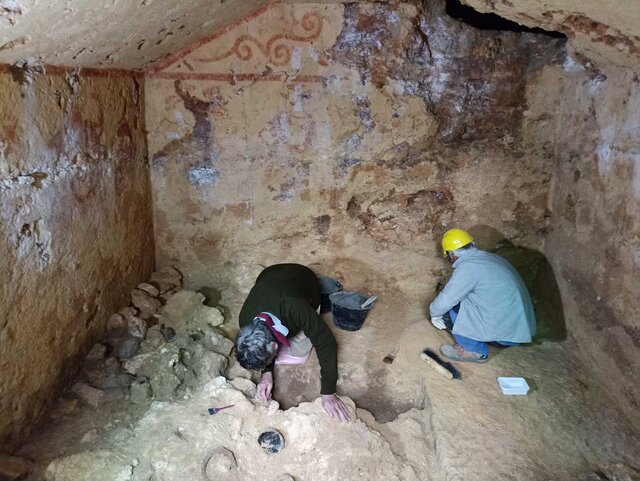
Restoration and Preservation: Protecting a Fragile Legacy
Due to the fragile state of the tomb and its frescoes, an extensive restoration project is currently underway. Experts are working diligently to reinforce the walls of the tomb and enhance the visibility of the frescoes using cutting-edge techniques such as multispectral imaging to analyze and reconstruct the original colors. These efforts aim to preserve the tomb’s cultural and artistic significance for future generations. Additionally, a small guardhouse will be built at the entrance to ensure that the tomb remains protected from environmental damage and looting.
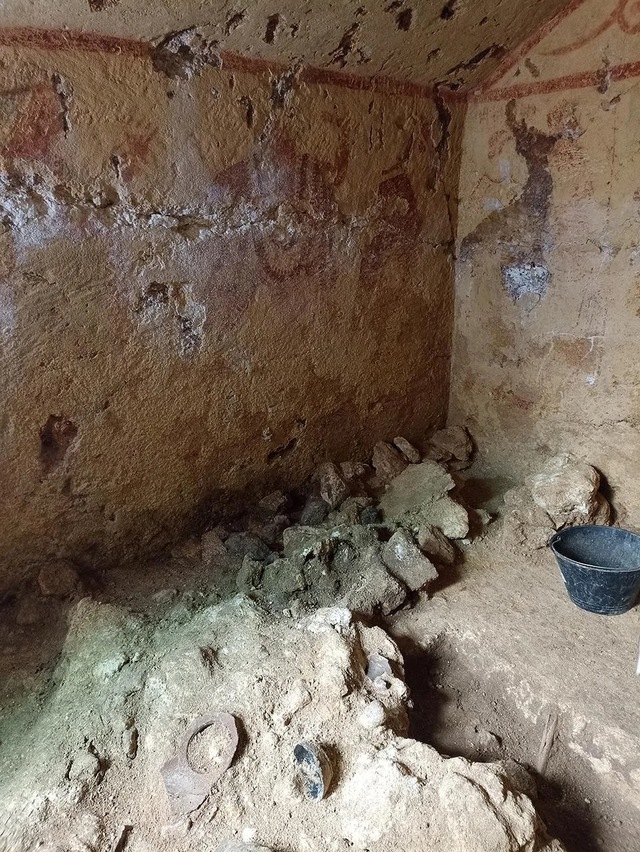
The restoration of the painted tomb highlights the importance of preserving cultural heritage, especially when dealing with delicate artifacts that offer valuable insights into ancient civilizations. The tomb’s rediscovery, coupled with the ongoing preservation efforts, demonstrates the commitment of archaeologists and conservators to safeguarding the legacy of the Etruscan people.
Video
Tune into this video from Expedition Unknown as Josh Gates explores the Etruscan ruins, uncovering the secrets of a lost civilization.
Conclusion: Insights into Etruscan Culture and Their Artistic Legacy
The discovery of the painted tomb in Tarquinia represents a significant contribution to our understanding of the Etruscan civilization, its culture, and its art. The frescoes, depicting lively dance scenes and a metallurgical workshop, offer a rare and vivid glimpse into the daily life and spiritual practices of the Etruscans. This find is not only important for its artistic value but also for the insights it provides into the roles of women in Etruscan society and the technological advancements of the time.
As the restoration of the tomb continues, more discoveries may emerge, further illuminating the complex and fascinating world of the Etruscans. This tomb, with its rich frescoes and intricate scenes, is a testament to the artistic and cultural achievements of a civilization that has long captivated the imaginations of historians and archaeologists alike. The preservation of such treasures ensures that future generations can continue to explore and learn from the remarkable history of the Etruscan people.
